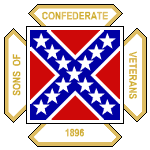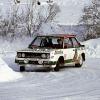
NASCAR's last Stock Cars
#1

Posted 25 January 2006 - 21:27
can someone tell me when was the last year that real stock cars raced in the Winston Cup?
When I say "real stock cars", I mean cars that you can see in any makes' catalogue, not the tubular-frame-with-painted-lamps-at-things that raced nowadays, and that look almost identical each others...
thanks
Advertisement
#2

Posted 26 January 2006 - 19:11
If you're a purist, the answer is about 1965. That would be about the last year the race cars resembled showroom cars. Beginning in 1966 race car makers like Holman-Moody began attaching standardized front clips to existing unibody cars to construct racecars, although the cars themselves still had to retain showroom sheetmetal, floorpans, side glass, bumpers, etc.
Side glass was forbidden about 1970. Thereafter the cars still retained basically showroom sheetmetal, but the chassis were less showroom and more racecar, so that by the end of the decade they were essentially silhouette racers, with integral roll cages, front clips, rear clips, etc. So if you're less of a purist, the answer would be c. 1978.
Everything since the mid-80's has been downhill in terms of how "stock" the cars remained, so that now we have standard 358 c.i.d. engines, no real differences between makes, and since 2003, a common template which makes all the cars look the same; without the decals, you can't tell a Ford from a Chevy.
John Craft's Anatomy and Development of the Stock Car is a useful reference on this topic.
#3

Posted 26 January 2006 - 19:35
that killed the solid lifter big valve hi compression motors in new cars
nastycar changed the rules and allowed prior years parts to be used
and then created the fiction of legal stock parts that were made ONLY for the racers
then some other cars parts were used on all cars like mopars "HEMI'' brakes
in the name of safty were put on chevys and fords
weight per cubic inch rules came in and killed the big blocks and everyone went to
over bored small blocks about 366 ci a size motor never sold to the public
but the cars still "looked stock" leading to chevy selling a monty carlo with extended
rear glass and smoothed lines as a nastycar edition in the late 70's
some where in that timeframe the tube rollbars and braces morfed in to total frames
lookalike rules are a much more resent idea but the stockcar was dead long before that came
#4

Posted 26 January 2006 - 21:10
#5

Posted 26 January 2006 - 21:40
In effect, the roll cage became the frame and the body just interferred with building the roll cage.
After a few years of that, they gave up the subtrafuge of even using a "body in white" from the manufacturer and the whole series was a tube frame chassis with a body hung off it.
For a couple of more years they used stock parts but then people began to buld their own body work to impliment their own ideas about aero and then they became what they are today, spec race cars with sponsors logos.
Every step made sense at the time but as long as it sold cars no one cared.
Now people like Peter DeLorenzo at autoextremist are saying that the cars look so little like their sponsors brothers that the factories should get out. Toyota joining the series may be the lver that succeeds in driving out the Detroit companies that paid to build NASCAR.
#6

Posted 27 January 2006 - 00:48
#7

Posted 27 January 2006 - 08:50
but it cuts off just before they stoped being stockcars
now they are just kitcars with retro-teck
#8

Posted 27 January 2006 - 10:36
Or is the production-car based Australian V8 Supercar series an alternative (although aren't they now talking about abandoning the use of production bodies in favour of a silhouette formula?)
#9

Posted 27 January 2006 - 20:53
Originally posted by BRG
To be fair to NASCAR (and I can't believe I just typed that), what would their grid look like today if it was to be composed only of genuinely stock cars? Are there any real current production models that would be eligible?
Let's see, rear wheel drive, V-8 powered, intermediate-sized-or larger, American-labeled cars?
Pontiac GTO (an Australian import, thank you very much)
Chrysler 300
Dodge Charger
Dodge Magnum
Ford Crown Victoria
Mercury Grand Marquis
Ford Mustang (no, better suited to Trans-Am)
A few GM FWD V-8 powered cars, if you wanted to race them.
Guess that list pretty much shows why NASCAR races what it races.
#10

Posted 28 January 2006 - 02:57
#11

Posted 28 January 2006 - 03:42
In 1955, Chevrolet and Ford, mirroring their intense spirit of competition that's displayed in 2001, also had factory-backed programs. But it was Chevrolet's introduction of the 355-cubic inch "small block" V8 engine that was one of the most significant developments in the history of stock car racing. That engine, with very minor changes, is still in use by General Motors race teams across the country in most racing series.
I remeber that it was the 265 cu in Chevy small block and every part in the engine has changed sicne it was introduced and there are Chevy engine parts racing in NASCAR taht never saw a production motor, so much for the veracity of the last line.
#12

Posted 28 January 2006 - 13:51
Is there a specific season when that change was made or did the change just evolve?
Henry
#13

Posted 28 January 2006 - 15:20
It makes for very close, very fierce racing, but it's not production car racing any more. It's a formula.
#14

Posted 28 January 2006 - 22:26
Originally posted by red stick
Let's see, rear wheel drive, V-8 powered, intermediate-sized-or larger, American-labeled cars?
Pontiac GTO (an Australian import, thank you very much)
Chrysler 300
Dodge Charger
Dodge Magnum
Ford Crown Victoria
Mercury Grand Marquis
Ford Mustang (no, better suited to Trans-Am)
A few GM FWD V-8 powered cars, if you wanted to race them.
Guess that list pretty much shows why NASCAR races what it races.
well in the old days they raced production cars that you could buy
would we ever had street hemi's or all the other goodies
without those rules
I would love to see BMW M-B , jag and the japs run their RWD v8 cars as built
and that are for sale at the dealers
and expect the USA teams get better real cars as a result
pushrods and carbs are DEAD
FI and DOHC is the current teck
#15

Posted 29 January 2006 - 02:39
Bob
#16

Posted 29 January 2006 - 02:57
#17

Posted 30 January 2006 - 04:41
Originally posted by Wolf
sorry- you are discussing modern racing cars and somebody has just mentioned pushrods and carbs? Pushrods as in thingies that run alogside cylinders and push the valves to open, and carbs as in carburettors?
Hmmm, as opposed to the even older over-head cam design.
What would all these "modern racing car" drivers do without a computer -- WALK.
Now that is what I call advanced.

Bob
#18

Posted 07 February 2006 - 22:24
Looking at NASCAR results tables, I note that both Greg Fielden's reference series and the Racing Reference website give up the effort to ascribe model years to the sheet metal the cars are based on from the 1976 season.
Is there a reason for this? I know that the Dodge Charger which represented Richard Petty's entry was based on the 1974 design right up to the end of 1977, but the record books don't reflect that.
Any ideas? It does seem to tie in approximately with the slide away from production-based components.
#19

Posted 07 February 2006 - 22:44
Trying to match model years for recordkeeping purposes to teams running this year's model, last year's model, or models from three years prior evidently led NASCAR to quit trying to state a model year at all.
Advertisement
#20

Posted 07 February 2006 - 23:08
I did like the comment once that the '78 Magnum campaign was a season of turning a dreadful car into one that was merely bad. Not a good ending for the Pettys and Mopar.
#21

Posted 08 February 2006 - 15:43
Originally posted by HistoricMustang
Perhaps the question becomes when did NASCAR allow a tube frame instead of the factory frame?
Is there a specific season when that change was made or did the change just evolve?
Henry
When Ford replaced the full-sized Galaxie with the Fairlane/Comet in NASCAR Grand National competition in '66-'67, the front suspension was totally unsuitable for high loadings on the big ovals... flimsy deal with spring atop the upper control arm as in the Mustang etc. So NASCAR allowed the use of the Galaxie front frame snout, steering and suspension, which was welded into the Fairlane unit-body and roll cage.
However, it could be argued that the chassis had ceased to be based on "real" cars a few years before that. Below is a well-known photo of John Holman standing next to a circa-1962 chassis. These were built and sold to teams, which skinned and reskinned them as various Ford and Mercury products. Not much truly "stock" here except the two frame rails.

#22

Posted 08 February 2006 - 19:30
Originally posted by McGuire
.....Not much truly "stock" here except the two frame rails.
Which is well compromised by the huge exhaust pipes that pass through the rear section of those rails!
#23

Posted 09 February 2006 - 08:11
As Big Bill France and many others discovered very quickly, as nice a concept as "strictly stock" might be, reality meant that modifications had to be made to the cars -- often major ones, if they were to become racing cars.
There was a significant shift in the cars as more "superspeedway" events entered the schedule in the early 1960s, the car Holman is standing by becoming the norm among the larger teams very quickly. It was as much for durability as safety.
NASCAR changed its tune after several bad accidents and allowed greated leeway in how the cars were modified internally as long as the exterior aspect of the cars were relatively untouched.
Lots of snide remarks noted during this discussion, but that is pretty much par for the course. These comments fail to fathom the conflicting demands that NASCAR racing at the Grand National/ Winston-Nextel Cup level places on vehicles and the difficulties of finding the right set of compromises that everyone can live with regarding safety, performance, and competition. This is a process in which you are forever chasing the bubble and will rarely get it "right" for very long.
As someone whose Luddite tendencies make me do this
For all its imperfections, the only series I generally even bother with these days are those under the NASCAR umbrella. Outside the safety arena, technology tends to be the greatest enemy of racing in the sense of competition. But, this is a minority opinion, I am sure.
#24

Posted 09 February 2006 - 13:07
In the final analyis, in motor racing it's the racing that counts.
#25

Posted 09 February 2006 - 16:38
Originally posted by HDonaldCapps
As someone whose Luddite tendencies make me do thiseach time I read someone extolling the virtues of "technology" in motor racing, I think that the time that I personally enjoyed racing was when the "technology" was generally pretty laughable and the talents of the mechanic (mechanics in the plural usually meaning perhaps as many as three, if you include the gofer/ apprentice) and the drivers were more in balance.
For all its imperfections, the only series I generally even bother with these days are those under the NASCAR umbrella. Outside the safety arena, technology tends to be the greatest enemy of racing in the sense of competition. But, this is a minority opinion, I am sure.
Don't be so sure.
#26

Posted 09 February 2006 - 16:44
Originally posted by HDonaldCapps
As someone whose Luddite tendencies make me do this each time I read someone extolling the virtues of "technology" in motor racing, I think that the time that I personally enjoyed racing was when the "technology" was generally pretty laughable and the talents of the mechanic (mechanics in the plural usually meaning perhaps as many as three, if you include the gofer/ apprentice) and the drivers were more in balance.
For all its imperfections, the only series I generally even bother with these days are those under the NASCAR umbrella. Outside the safety arena, technology tends to be the greatest enemy of racing in the sense of competition. But, this is a minority opinion, I am sure.
I'm not alone, ehehehe...
#27

Posted 09 February 2006 - 22:04
#28

Posted 11 February 2006 - 01:01
Originally posted by HDonaldCapps
From the very start, cars competing in the Strictly Stock/Grand National Division were allowed to use cars from the current and preceding two seasons in competition. The three year window was stretched to four during the 1970s as mentioned.
As someone whose Luddite tendencies make me do thiseach time I read someone extolling the virtues of "technology" in motor racing, I think that the time that I personally enjoyed racing was when the "technology" was generally pretty laughable and the talents of the mechanic (mechanics in the plural usually meaning perhaps as many as three, if you include the gofer/ apprentice) and the drivers were more in balance.
For all its imperfections, the only series I generally even bother with these days are those under the NASCAR umbrella. Outside the safety arena, technology tends to be the greatest enemy of racing in the sense of competition. But, this is a minority opinion, I am sure.
Thanks Don for pointing out the three and four year sheet metal window. I was just getting ready to correct that when I noticed your post (I am way behind on replies to posts on TNF). I believe the window always was four for NASCAR PCLM/GNW/WGN cars, and I think even for GN cars up to Daytona each year as I recall seeing cars with 4 year old sheet metal at Riverside in January.
The post about all the problems with the Dodge Magnum and problems c. 1977-78 with the GM models and their "opera windows" (the air was lifting wheels off the ground), shows at least a very stock body template had to be adhered to as late as the late 1970's. I still remember seeing owner Cos Cancilla's four door Oldsmobile PCLM/WGN car at Riverside in January of 1970. One could plainly see where the rear door handles had been removed and a piece of plain sheet metal had been welded behind the spot (!).
I'm hardly a Luddite as I enjoyed greatly the experimentation in Sports Cars, F1 and in U.S. Championship racing, but I've also enjoyed "spec" series as well.
My problems with NASCAR and why I won't follow anything connected with them have nothing to do with snobbery (something that often shows itself as a basis in other's disdain). I am great supporter and fan of true oval racing. To me, NASCAR falls way short in far too many areas since the early to mid-90's. I certainly agree how technology is often racing's greatest enemy in terms of competition. Even in costs alone.
#29

Posted 12 February 2006 - 21:00
Maybe HCapp can give details, but if I remember correctly, while the wheelbase could be altered (at during some years) the car had to have a legal wheelbase to start with.
The new T-bird duing the eighties only had a 104 inch wheelbase which was not legal, so some major rule mod. had to be made just to allow it to even qualify, although the cars that ran were probably the first with what is now (I think) the standard 110 inch wheel base.
Which also meant, those T-birds had either little or extensively mod. "stock" body panels.
Bob




















